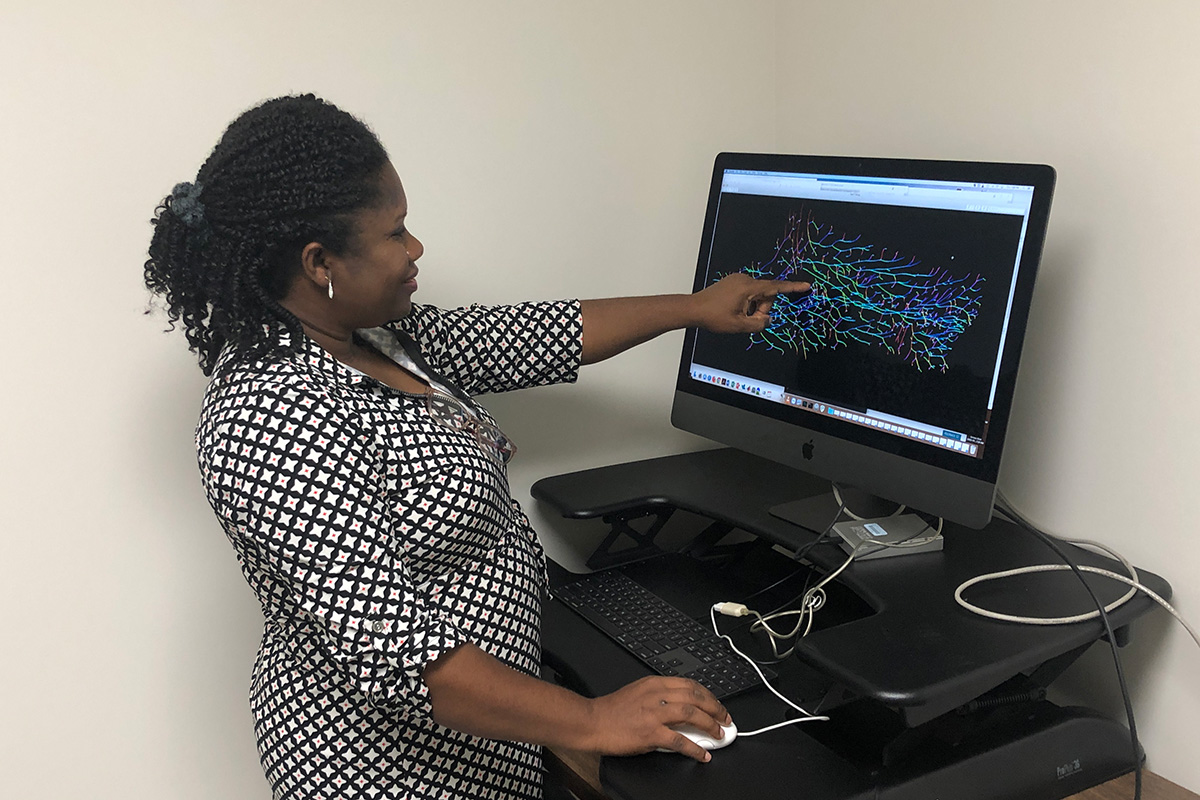
What do the lungs, pancreas, kidneys and breasts all have in common? Branched structures that allow the flow of air, digestive fluids, blood and breastmilk. But how do these branches form and what goes wrong in this growth process that results in diseases like breast cancer?
San Diego State University mathematician Uduak George is investigating these questions with funding from a National Science Foundation CAREER award.
“Receiving an NSF CAREER award is as big a deal as you can get in math, especially for early career faculty,” said Peter Blomgren, chair of SDSU’s Department of Mathematics and Statistics. “It further confirms that Dr. George is a rising superstar in the eyes of the broader applied mathematics community.”
George builds and tests complex equations for a computer to predict the optimal conditions for new branches to form from existing cells.
“In math, you can do a lot,” George said. “You can repeat scientific experiments with a mathematical model but you have to make sure the model is answering the question you want it to answer. Would the questions we can ask with our models move the biology field forward?”
Using math to understand nature
Many factors control how cells in different organs move, grow, and die. The genetic instructions in DNA are fundamental to cells knowing when to grow; the chemicals present outside of a cell can signal when a cell should split in two; and physical characteristics like how stiff a growing cell’s membrane is can influence the shape and magnitude of its growth.
How these biochemical and mechanical forces influence each other is the mystery George will try to solve with her mathematical tools.
To refine her equations, George collaborates closely with biologists and doctors that gather images of branching pathways of mammary glands in mice and CT scans of healthy and chronically ill human lungs.
Then, using analysis techniques informed by theories of advanced geometry, she can find visual patterns in these images. Figuring out which patterns result from which growth environments will help inform treatment for diseases caused by cells growing abnormally.
Bringing the real world into the classroom
Applying math to better understand and solve real-world problems has been George’s goal since a particularly memorable lesson in elementary school in Nigeria.
While sitting outside in a semicircle with her classmates, George’s teacher asked them how they would know how much change to expect if they bought something at the market.
Realizing that not knowing math could put her at a disadvantage, financially and otherwise,- motivated George to learn all she could, even if her friends hated the subject.
While her classmates wanted to perform music in front of large crowds, George wanted to know what it felt like to have a eureka moment and learn something new about the natural world like the scientists she would read about.
George plans to teach more SDSU students and local high school teachers how to see connections between math and their own curiosities with some of the funding from her new grant.
In courses she has taught previously, students have excitedly applied algorithms to neuroscience and economic data. Next, they just might branch out and join George on her quest to answer fundamental questions of how living things grow.